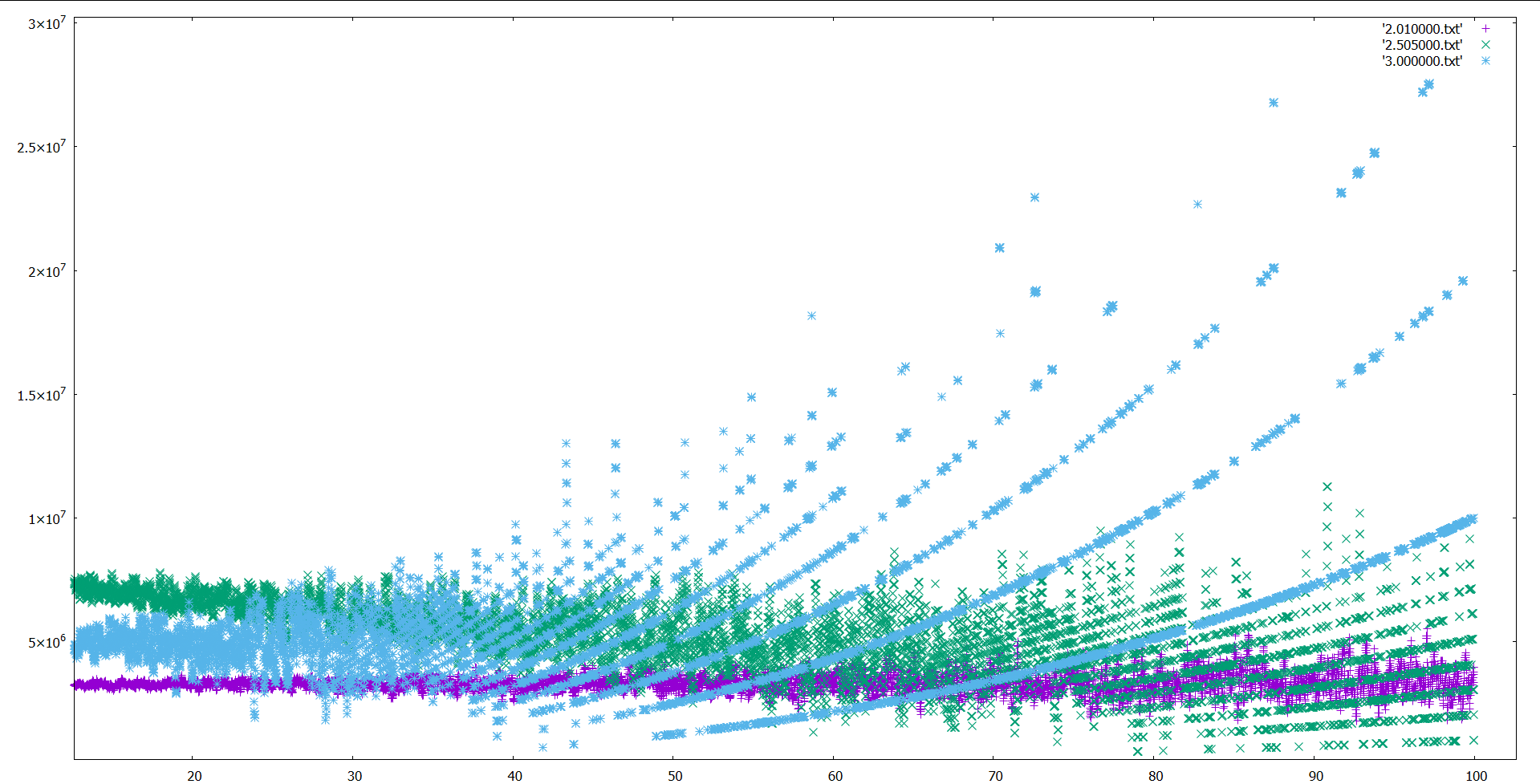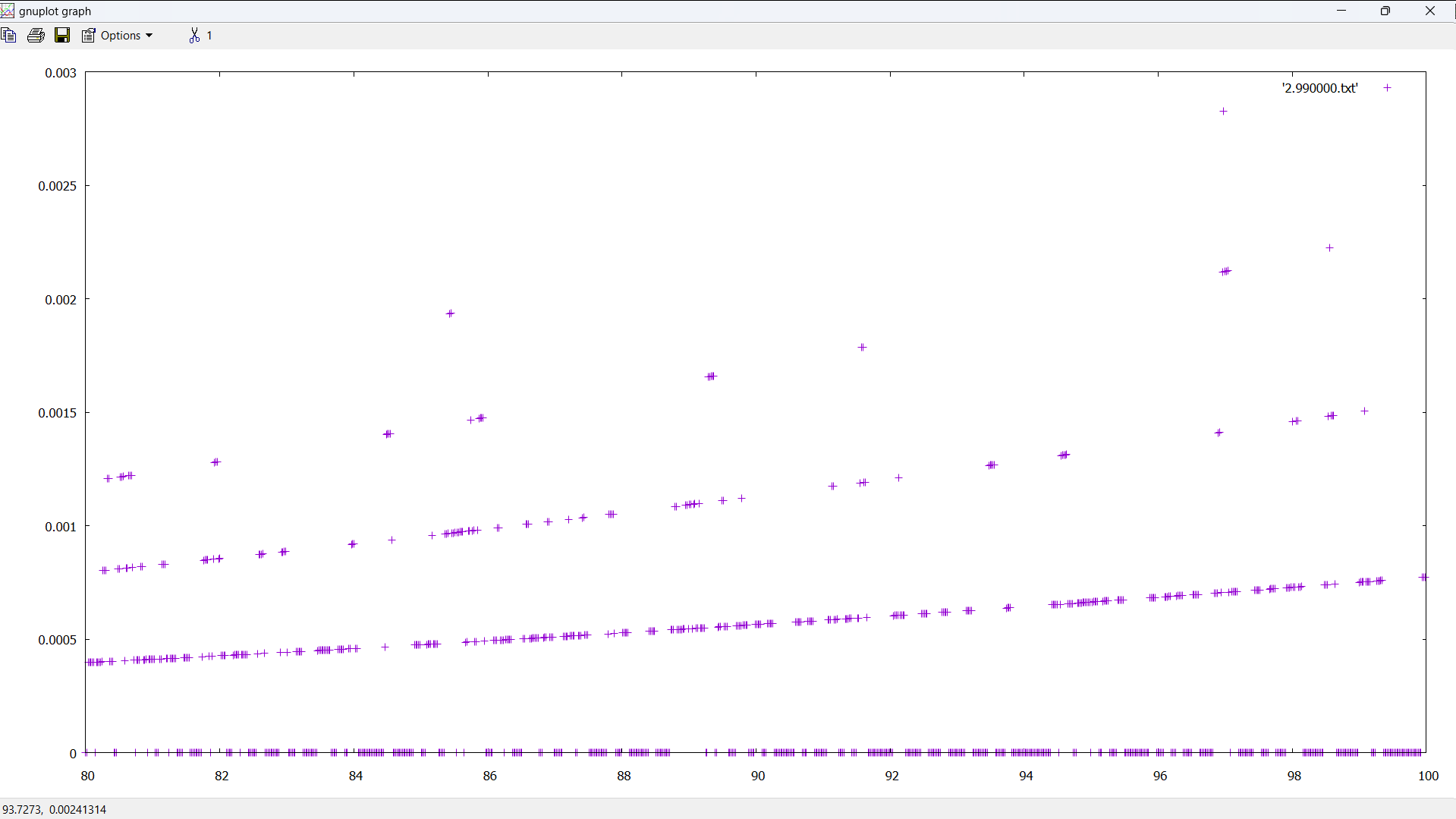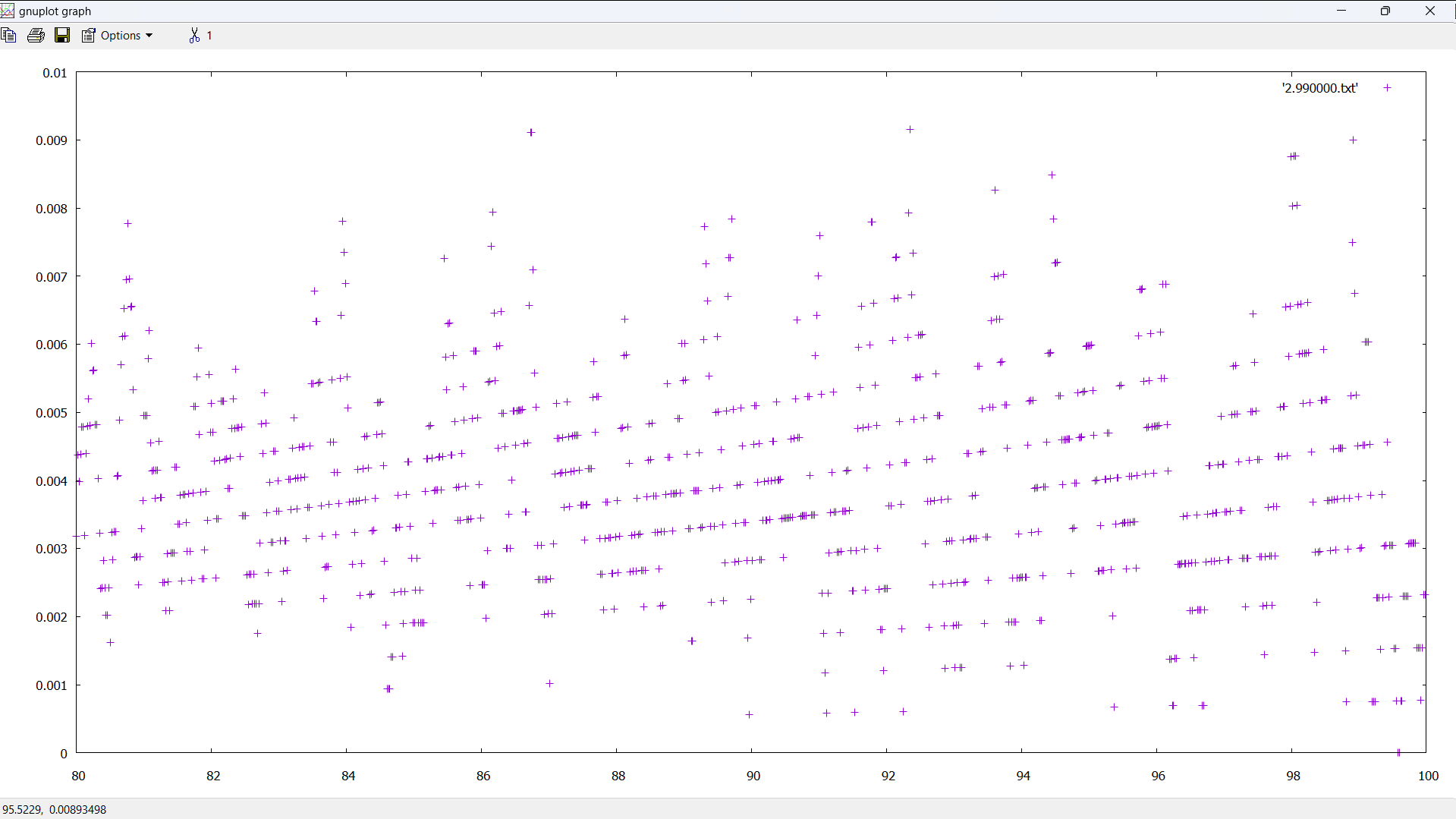Here is the diagram for dimension D = 2.01, D = 2.5, D = 3.

I am currently waiting on the calculations using Boost Multiprecision. Hopefully the slow down will be offset by better plots.
I gave up on Boost Multiprecision. There's actually no need for it. long double is fine.
The behaviour that we were trying to describe (the bands) are not because of fp precision, but rather because of the number of intersections we were obtaining.
The greater the number of intersections, the more bands there are.
Where n = 10,000,000:

Where n = 100,000,000:

So the universe has banding artifacts. Fine. If so, i no longer have to fix them as they appear.
But what if the banding comes from your random number generator?
Psychic moment!
I just yesterday switched from rand() to Mersenne Twister. No significant changes occurred, that I could tell anyway.
The following code calculates the Bekenstein-Hawking entropy of a unit sphere, using t Hooft’s holographic principle:
#include <iostream>
using namespace std;
int main(void)
{
long double c3 = pow(299792458.0, 3.0);
long double G = 6.6743e-11;
long double pi = 4.0 * atan(1.0);
long double h = 6.62607015e-34;
long double hbar = h / (2.0 * pi);
long double r = 1;
long double A = 4 * pi * r * r;
long double S_BH = (c3 * A) / (log(2.0) * 4.0 * G * hbar);
cout << S_BH << endl;
return 0;
}The output is n = 1.73502e+70. I'm running out of RAM when using n = 1e10. :(
I'd also like to mention that Ubuntu for WSL (https://ubuntu.com/desktop/wsl) uses 16-byte long doubles.
In the Windows environment long double is only 8-bytes, equal to the double type.